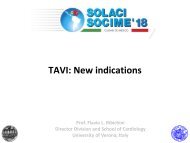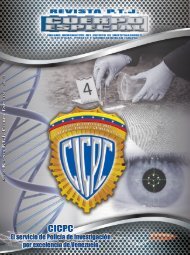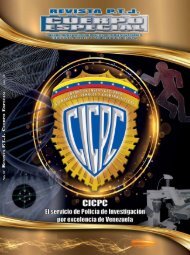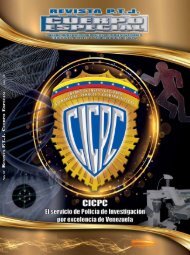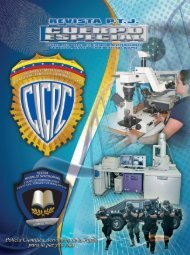Benson
Lee N. Benson, MD, FRCP(C), FACC, MSCAI
Lee N. Benson, MD, FRCP(C), FACC, MSCAI
Create successful ePaper yourself
Turn your PDF publications into a flip-book with our unique Google optimized e-Paper software.
When Not to Use a Device:<br />
Characteristics of Atrial Septal Defects<br />
Not Percutaneously Closed<br />
Lee N. <strong>Benson</strong>, MD, FRCP(C), FACC, MSCAI<br />
The Hospital for Sick Children<br />
Toronto, Canada
Disclosures:<br />
Proctor, consultant:<br />
Medtronic Inc., Edwards Lifesciences
ASD Closure (a focus on the Secundum ASD)<br />
• It’s a common, simple procedure so easily reproducible, a<br />
1 st year fellow can do it,
ASD Closure (a focus on the Secundum ASD)<br />
• It’s a common, simple procedure so easily reproducible, a<br />
1 st year fellow can do it, -in fact your daughter can do it!
ASD Closure (a focus on the Secundum ASD)<br />
• It’s a common, simple procedure so easily reproducible, a<br />
1 st year fellow can do it, -in fact your daughter can do it!<br />
• Procedural complications have been detailed, dissected,<br />
& inferences have been drawn, although there remains<br />
controversies over their etiology<br />
• Everyone who has performed ASD closure feels as if<br />
he/she is an expert because of procedural simplicity
However, not all atrial defects should be closed or<br />
closed percutaneously<br />
Objectives:<br />
What are anatomical situations where a device<br />
maybe inappropriate<br />
Clinical characteristics of children whose defects<br />
were not closed
Anatomical Considerations:<br />
Understanding the components of the atrial septum & surrounding<br />
structures is important to prevent short & long term complications & to<br />
decide when not to close the defect: need of a big device, absence rims,<br />
septal morphology
Ao rim absence may expose the device directly to the aorta
IVC and posterior rim absence<br />
Device embolization due to poor stability<br />
Evaluate the extent of deficiency: short segment may not<br />
be significant
The maligned or spiral atrial septum<br />
http://www.3dechocardiography.com/
Kijima et al. J Case Rep 2013
What is the profile of children deferred for device<br />
closure?<br />
Over an 8-year period, we evaluated the incidence,<br />
morphological characteristics, & rationale for which<br />
device closure was thought inappropriate
Surgery: age-5.7 (0.6–17.4) yr, wt-20.5 (5.6–73.3) kg & defect diam-22.9 (9–49) mm vs.<br />
Device closure: age-8.2 (9 d to 21) yr, wt-30 kg (3.5–120) kg & defect diam-17.2 (5–39) mm
Demographics of Children Whose Defects Were Not Closed Percutaneously<br />
Surgery was performed at a mean age of 5.7<br />
years<br />
(range: 0.6–17.4 years), weight of 20.5 kg<br />
(range:<br />
5.6–73.3 kg) and defect diameter of 22.9 mm<br />
(range:<br />
9–49 mm) versus device closure at a mean age<br />
of 8.2<br />
years (range: 9 days to 21 years), weight of 30<br />
kg<br />
(range: 3.5–120 kg) and defect diameter of<br />
17.2 mm<br />
(range: 5–39 mm)<br />
Overall, children undergoing surgical closure had larger defects per<br />
kilogram body weight, & more were
Indications for Referral Directly to Surgery<br />
Surgery was performed at a mean age of 5.7<br />
years<br />
(range: 0.6–17.4 years), weight of 20.5 kg<br />
(range:<br />
5.6–73.3 kg) and defect diameter of 22.9 mm<br />
(range:<br />
1.50–3.69)<br />
9–49 mm) versus device closure at a mean age<br />
of 8.2<br />
years (range: 9 days to 21 years), weight of 30<br />
kg<br />
(range: 3.5–120 kg) and defect diameter of<br />
17.2 mm<br />
(range: 5–39 mm)<br />
D/W ratio of 1.83 (range: 0.47–3.69)<br />
Two-thirds were
Indications for Deferred Implantation at Catheterization<br />
*<br />
*<br />
*<br />
*<br />
^<br />
^<br />
^<br />
Sufficient rims: D/W 1.64<br />
(range: 0.95–2.42): 7
82 children referred directly to surgery, had uncomplicated closure,<br />
mean LOS 3.1 days (range: 2–8 days)
82 children referred directly to surgery, had uncomplicated closure,<br />
mean LOS 3.1 days (range: 2–8 days)
82 children referred directly to surgery, had uncomplicated closure,<br />
mean LOS 3.1 days (range: 2–8 days)
82 children referred directly to surgery, had uncomplicated closure,<br />
mean LOS 3.1 days (range: 2–8 days)
82 children referred directly to surgery, had uncomplicated closure,<br />
mean LOS 3.1 days (range: 2–8 days)<br />
43 (82%) subsequently underwent surgical closure without complication,<br />
mean hospital LOS 3.2 days (range: 2–7 days).
What did we learn?<br />
These observations support previous reports that the most<br />
common reason deferring a transcatheter procedure was<br />
insufficient or deficient rims, particularly the IVC or posterior<br />
rims, as seen in just over 1/3 of the children<br />
In 1/4 of the children the operator felt that the device would be<br />
too large to be accommodated in the septum & interfere with<br />
contiguous cardiac structures & a risk factor for erosion,<br />
atrioventricular valve regurgitation, complete heart block, or<br />
bradycardia<br />
From this data, weight can be used to guide the largest device,<br />
which could plausibly be implanted based on a D/W: in cases 1.5:1 was thought too large to be implanted
So When Not to Close<br />
If the size fits:<br />
in the small child D/W >1.5:1 if
Gracias<br />
Thank You



